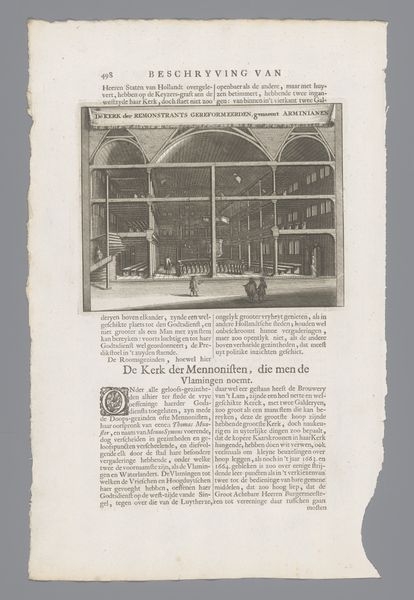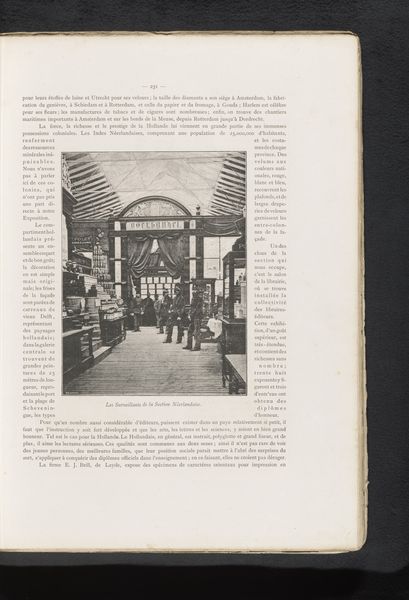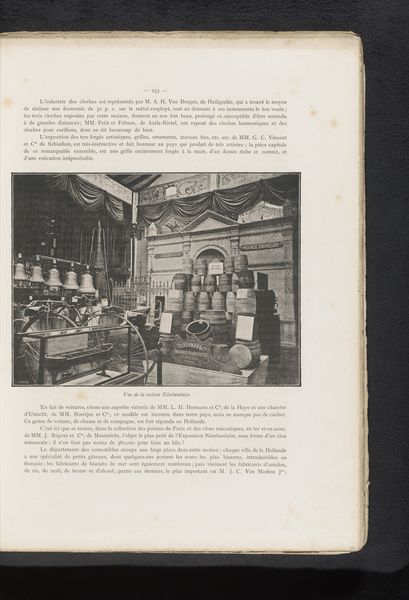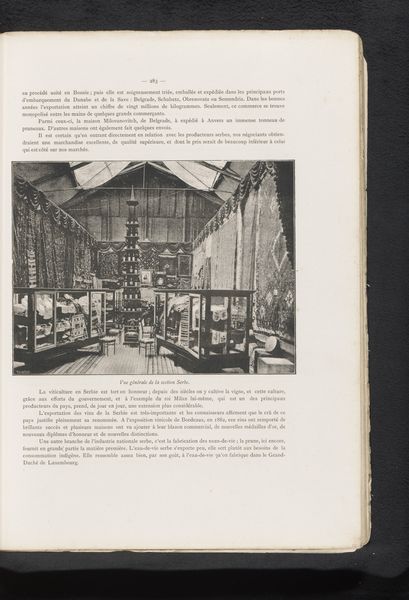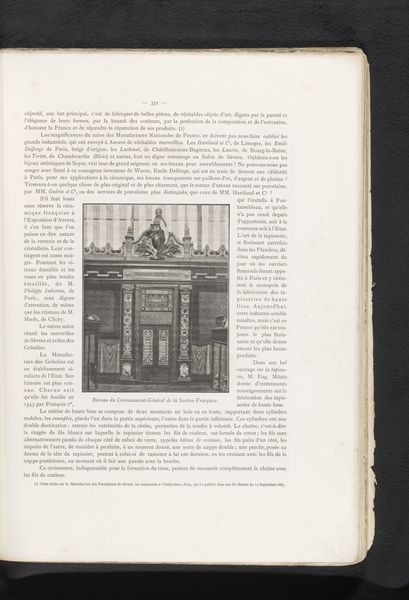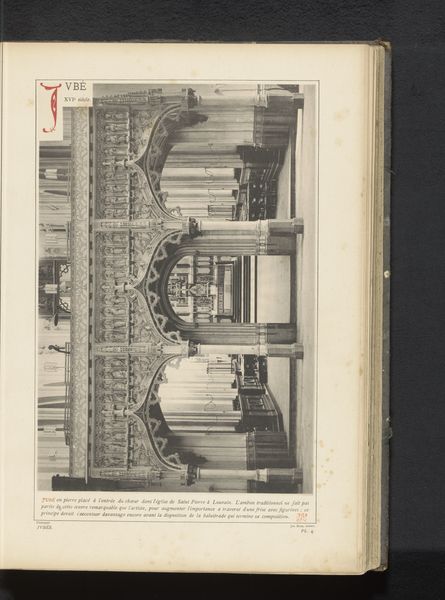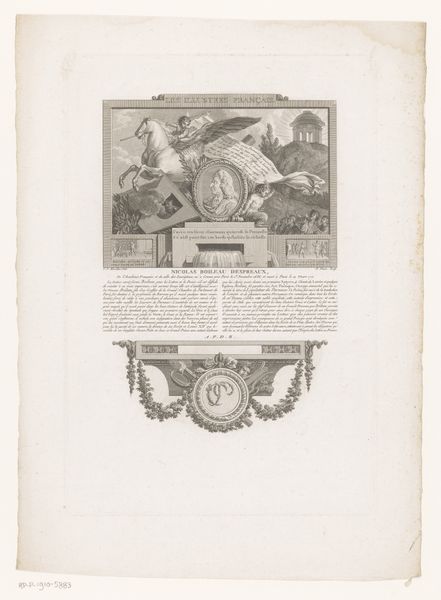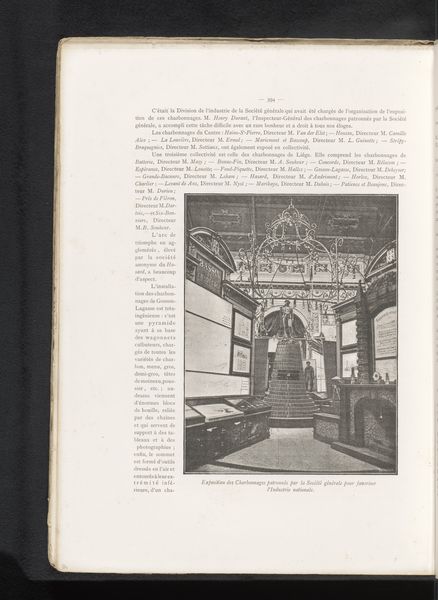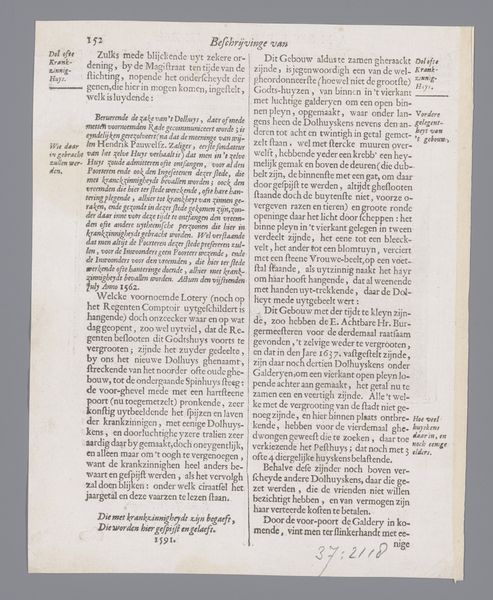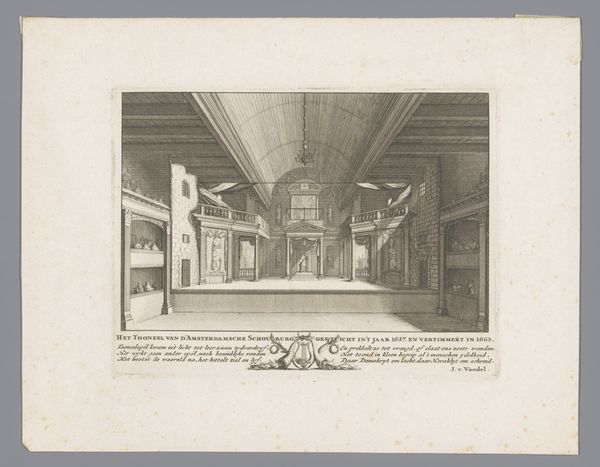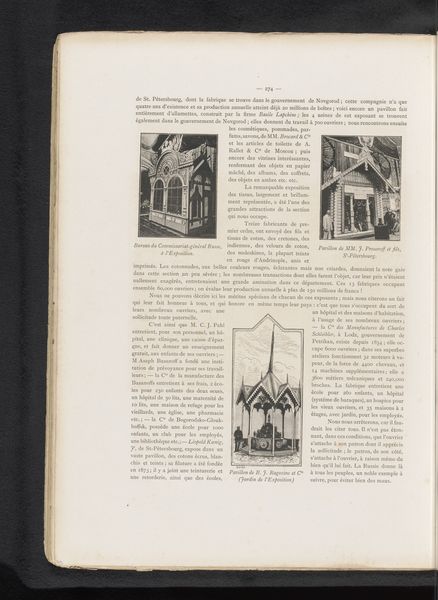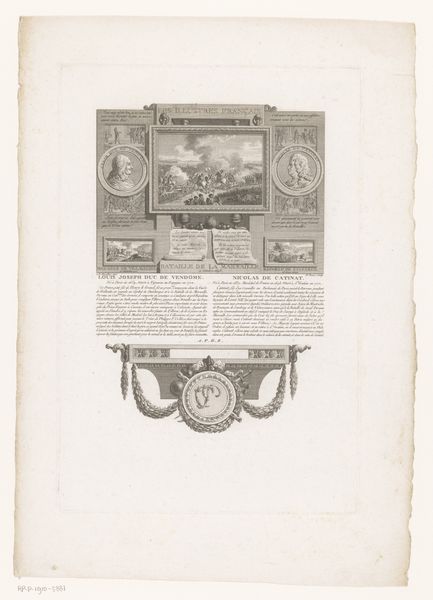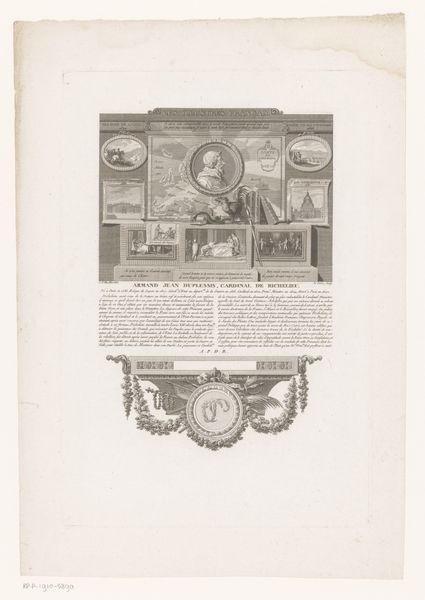
Gezicht op de Doopsgezinde Singelkerk gezien vanaf de Herengracht te Amsterdam 1726
0:00
0:00
print, paper, engraving, architecture
#
baroque
#
dutch-golden-age
# print
#
perspective
#
paper
#
line
#
cityscape
#
engraving
#
architecture
Dimensions: height 330 mm, width 210 mm, height 125 mm, width 159 mm
Copyright: Rijks Museum: Open Domain
Curator: We're looking at an engraving from 1726, titled "Gezicht op de Doopsgezinde Singelkerk gezien vanaf de Herengracht te Amsterdam." It gives us a view into the interior of the Singel Mennonite Church in Amsterdam. Editor: It’s striking! Stark even. The space feels immense, almost overwhelmingly so, especially compared to the tiny figures clustered in the middle. It reminds me a bit of stage design. Curator: Precisely! The architecture is rendered with a clear focus on perspective, giving that stage-like quality. It reflects the Baroque period’s interest in creating depth and grandeur, even in relatively modest religious settings like this Mennonite church. Editor: I notice how simple the interior appears in terms of ornament. The architecture is quite imposing, with the wooden beams that arch up, but the decoration is rather muted. It’s almost industrial in its severity, contrasting with the ornate worship spaces one might imagine from that era. Curator: The plainness is central to understanding the image’s historical context. The Mennonites were Anabaptists, known for their rejection of opulent displays of wealth and power, embracing a simple life. So this lack of decoration reflects their values but also, I think, demonstrates their place in Amsterdam’s religious landscape. Editor: So, it becomes less about high art and more about functionality, or perhaps what we might call "honest craft?" You can see in the textures that it's been printed, handled, and I can even imagine people holding the broadside it was published in. It brings up considerations about labor, circulation, and who was consuming these images. Curator: Exactly. It wasn’t about individual authorship or artistic genius. It was designed to disseminate information. Here’s an image embedded within a descriptive text – more akin to journalism than to art as we might define it now. The engraving played a role in shaping the public perception and memory of this unique space and faith community in 18th-century Amsterdam. Editor: Considering how these images circulated in the public sphere really changes our perception of its value, doesn't it? Curator: It does indeed. This is more than just a cityscape—it's a social and political artifact, giving us access to a specific moment in Amsterdam’s complex religious history. Editor: A powerful glimpse, especially when thinking about the printmaking and dissemination involved. Curator: Yes, seeing it in its proper historical and social frame adds layers to its meaning.
Comments
No comments
Be the first to comment and join the conversation on the ultimate creative platform.
